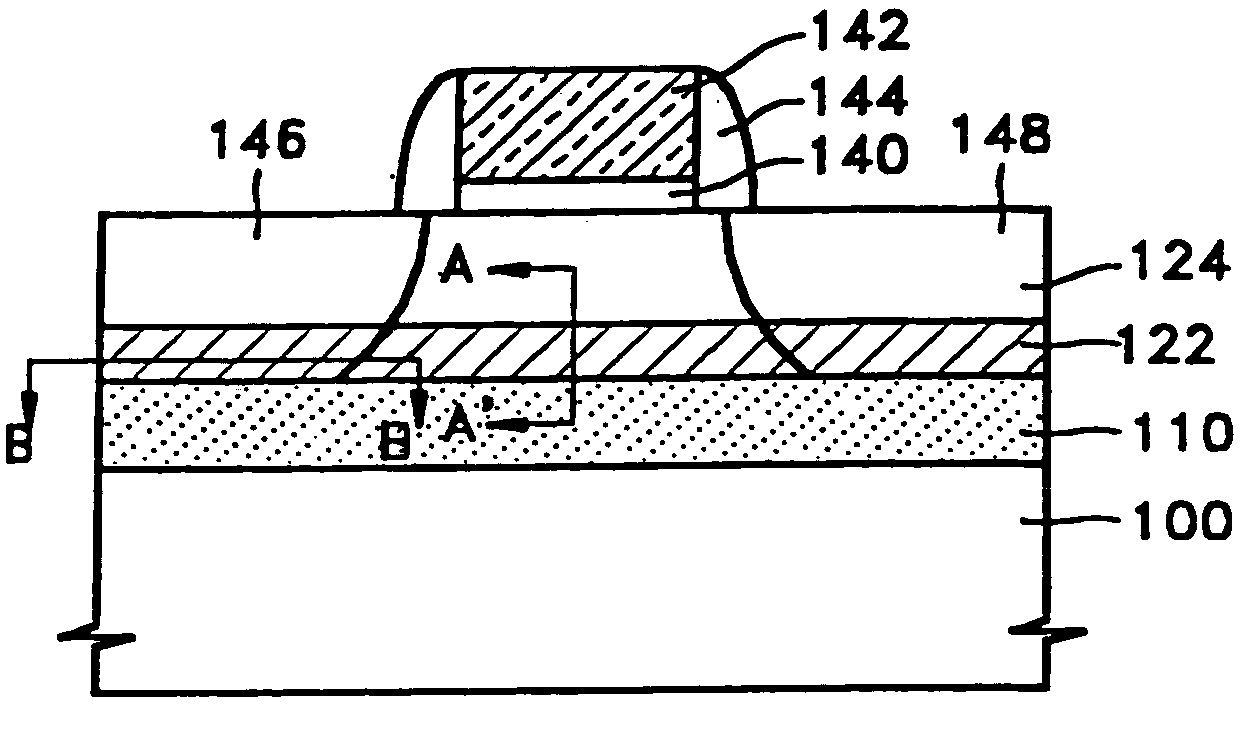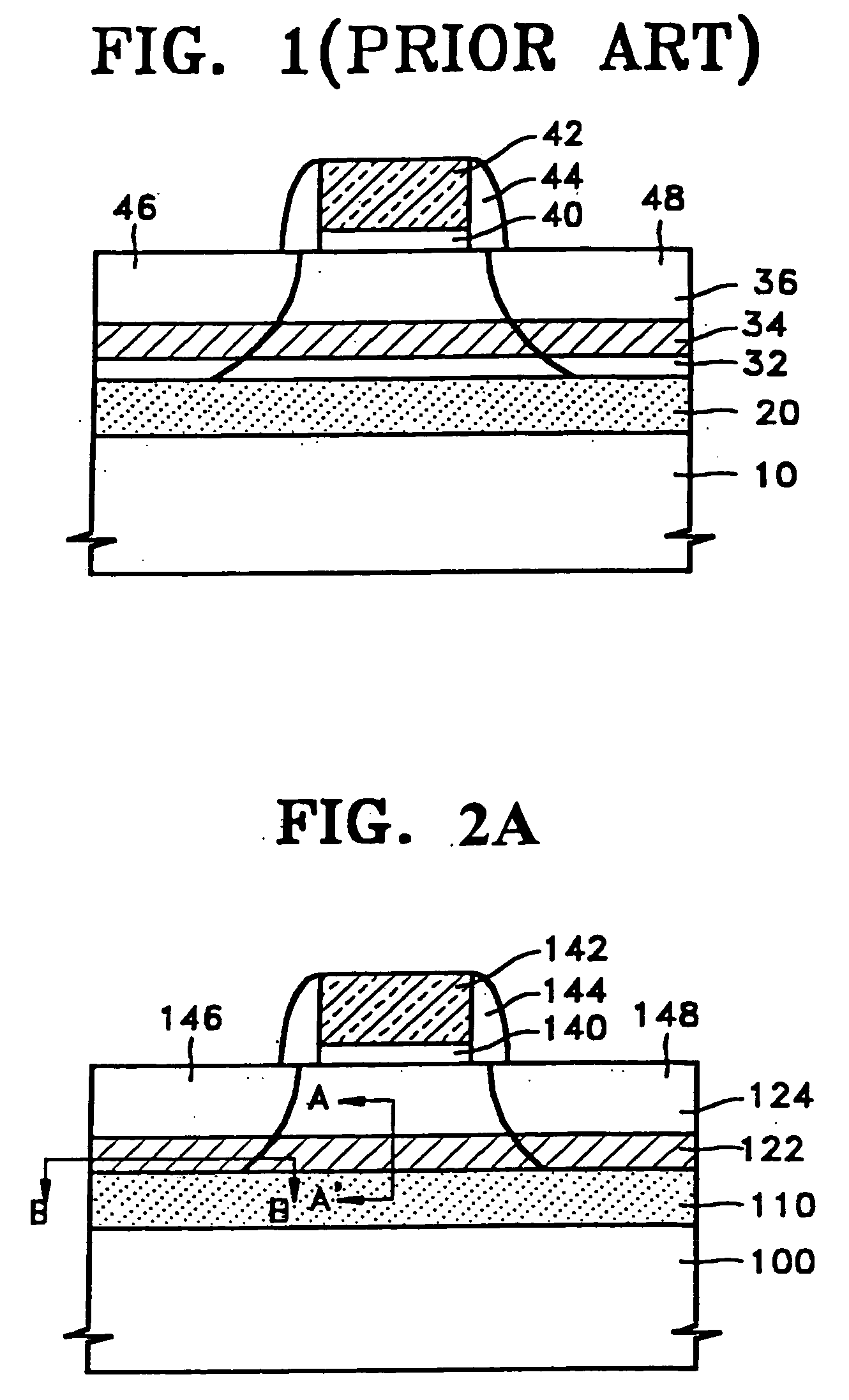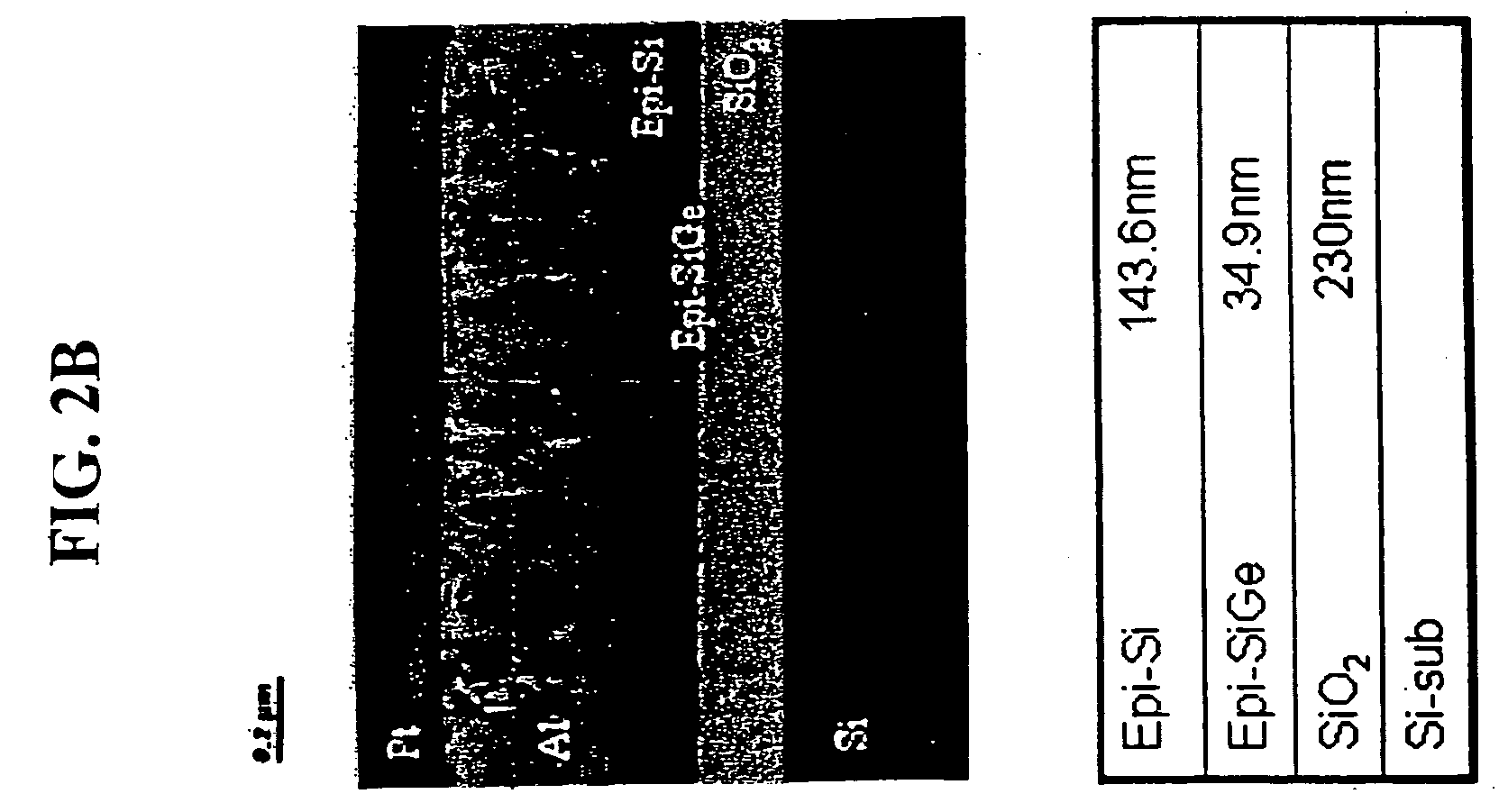SOI structure having a sige layer interposed between the silicon and the insulator
a technology of silicon and insulator, which is applied in the direction of semiconductor devices, electrical equipment, transistors, etc., can solve the problems of pn junction isolation between adjacent devices on bulk silicon substrates, inconvenient high-voltage applications, and integrated circuits, so as to increase the breakdown voltage and thereby the drain current
- Summary
- Abstract
- Description
- Claims
- Application Information
AI Technical Summary
Benefits of technology
Problems solved by technology
Method used
Image
Examples
first embodiment
[0050]FIGS. 7-12 are cross-sectional views showing a process for fabricating the SOI structure of the present invention. Referring to FIG. 7, a first SiGe layer 126 is epitaxially grown over a first substrate 140. The first substrate 140 is a monocrystalline silicon substrate used as a seed of the epitaxial growth. After loading the silicon substrate 140, having a purified surface, into a chemical vapor deposition (CVD) apparatus heated to a predetermined temperature, such as for example, 700° C., a reactive gas including silicon (e.g. Si2H6, SiH4, SiCl4 etc) is supplied with a reactive gas including germanium (e.g. GeH4, Ge2H6, etc.) to grow the first SiGe layer 126 over the silicon substrate 140. When the first SiGe layer 126 is grown to a predetermined thickness, for example, 10-50 Å, preferably, 20 Å, the Ge reactive gas ceases to be supplied, and continuously, a silicon layer, which will be a device layer 124, is epitaxially grown in situ to a thickness of several hundreds to t...
second embodiment
[0059]FIGS. 13-18 are cross-sectional views showing a process for fabricating the SOI structure of the present invention. Unlike the first embodiment, the second embodiment isolates the buried SiGe layer by separation implanted oxygen (SIMOX). The SIMOX process implants oxygen ions into a silicon substrate upon which thermal oxidation forms an intermediate insulating layer. The SIMOX techniques are described in Sadao Nakashima “High-quality Low-dose SIMOX Wafers”, IEICE TRANS ELECTRON, VOL. E80C, NO. 3, pp 364-369, March 1997, the entire contents of which are incorporated herein by reference. Further, SIMOX techniques are described in U.S. Pat. No. 6,486,037, the entire contents of which are incorporated herein by reference.
[0060] Referring to FIG. 13, a SiGe layer 126 is epitaxially grown over a substrate 140. The substrate 140 is a monocrystalline silicon substrate used as a seed of this epitaxial growth. After loading the silicon substrate 140 having a purified surface into a ch...
third embodiment
[0066]FIGS. 19-24 are cross-sectional views showing a process for fabricating the SOI structure of the present invention. Like the first embodiment, the third embodiment involves implanting hydrogen ions to form a cleavage region. The difference is that a single SiGe layer is formed.
[0067] Referring to FIG. 19, a silicon layer 124 is epitaxially grown over a first substrate 140 formed of silicon. The first substrate 140 is a monocrystalline silicon substrate used as a seed of this epitaxial growth. The silicon layer 124 is epitaxially grown to a thickness of several hundreds to thousands of angstroms, for example, 500 and 1800 Å in this embodiment. Then, the reactive gas including germanium is supplied again to epitaxially grow a SiGe layer 126 to a thickness of several hundreds to thousands of angstroms, for example, about 300 Å.
[0068] Referring to FIG. 20, a silicon oxide layer is formed on the epitaxially grown SiGe layer 126 as an insulating layer 132 to a thickness of several...
PUM
 Login to View More
Login to View More Abstract
Description
Claims
Application Information
 Login to View More
Login to View More - R&D
- Intellectual Property
- Life Sciences
- Materials
- Tech Scout
- Unparalleled Data Quality
- Higher Quality Content
- 60% Fewer Hallucinations
Browse by: Latest US Patents, China's latest patents, Technical Efficacy Thesaurus, Application Domain, Technology Topic, Popular Technical Reports.
© 2025 PatSnap. All rights reserved.Legal|Privacy policy|Modern Slavery Act Transparency Statement|Sitemap|About US| Contact US: help@patsnap.com



